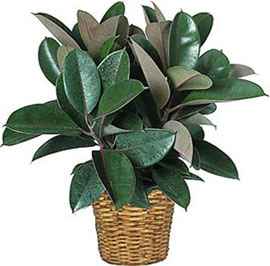Anti-Aging linked to Interior Decorating
Whether we’re talking about the laws of physics or the healing hands of reiki, all life is energy. And energy, according to the wisdom of traditional healing practices, can be channelled to create healthy living spaces. Adopt the decorating practices of feng shui, Ayurveda, and chromotherapy to increase the flow of energy in your home.
Energy exchange
A river’s dynamic flow, the wind’s pattern-making on fields or sandy expanses, the constancy of our breath and shifting, our minds brimming with curiosities—nothing is ever still. We, like all of nature, are ever vibrating, ceaselessly sending out, taking in, and exchanging energy.
These energetic vibrations—invisible, subtle, or intense—make themselves known in many ways, as when we find ourselves struck by a place, picture, or scent. Like nostalgia, repulsion, or peace, there can be dramatic differences in the way we feel in the presence of certain colours, textures, or designs.
Traditional wisdom
Many traditions, such as Ayurveda and traditional Chinese medicine (TCM), offer wisdom about the energy of our physical contexts. They contain helpful, healthful advice about practices and practical elements to incorporate. Underneath such modalities is a shared, undergirding principle that the world is made up of energy.
Decorate for well-being
By understanding the impact and influence of what’s around us, we can intentionally cultivate a serene bedroom, heartening garden, or vibrant office—personal spaces that enhance our well-being.
Colours, well-chosen objects, and arrangements are sensed by the eyes, skin, nerves, and mind. As such, decorating has a therapeutic element and can be considered crucial to creating balance, energy, and holistic well-being.
Ayurvedic advice
In Ayurveda, a system of medicine held to be among the first in human history, there are five elements that comprise our bodies: air, earth, water, fire, and space. These in turn form three foundational constitutions, or doshas: vata, pitta, kapha. Ideally, we have these in balance, but most of us have one or two which dominate.
Our doshas comprise everything about us, from the lustre of our hair to the structure of our body and metabolism, and from the diseases to which we are prone to what we crave. Although complex and nuanced, each dosha has fundamental characteristics:
Vata: typically slim, enthusiastic, and prone to worry
Pitta: strong digestion, warm body temperature, and consistent weight
Kapha: heavier, slower, likes sleeping, and has strong, well-lubricated body
According to Ayervedic philosophy, we all have certain colours that are more balancing and harmonizing for us than others because of our different doshas. Ayurvedic decorating, in specific dosha-based colour choices, can restore imbalances and enhance health.
Note: in a shared household generally healthy colour options include green, pink, orange, sky blue, and white.
Insights from other traditions
Chromotherapy (or colour therapy) is another discipline that may offer insights into healthy living spaces. It may be beneficial to ask your current practitioner—homeopath, naturopath, or registered massage therapist—for any insights they can offer into how to bring intentionality to your environs and thus elevate your treatments and overall well-being.
After all, the energy surrounding us—kitchen or living room, object or coat of paint, design or décor—impacts everything we do and feel. By eliminating disarray and closed furniture layouts, or integrating a resonant colour or plant, we can re-energize our dedication to healthy living.
Tips from TCM
Feng shui—feng denoting wind and shui, water—is a 7,000-year-old practice that explores the connection between person and place, and maintains that all things have energy. This energy affects the well-being of a space and the experiences of those within it. At the heart of feng shui is the notion that what surrounds us infuses our bodies, minds, and lives.
Increased clarity and spaciousness are the aims of feng shui, achievable through yin-yang equilibrium. When we turn our awareness to when we feel most well—and most blocked, sluggish, or negative—and in specific, how these sensations are influenced by the objects, shapes, spaces, and hues around us, we can improve the quality of our health.
Read more? Go to: http://www.alive.com/articles/view/23515/decorating_for_health
Comments
There are 0 comments on this post














